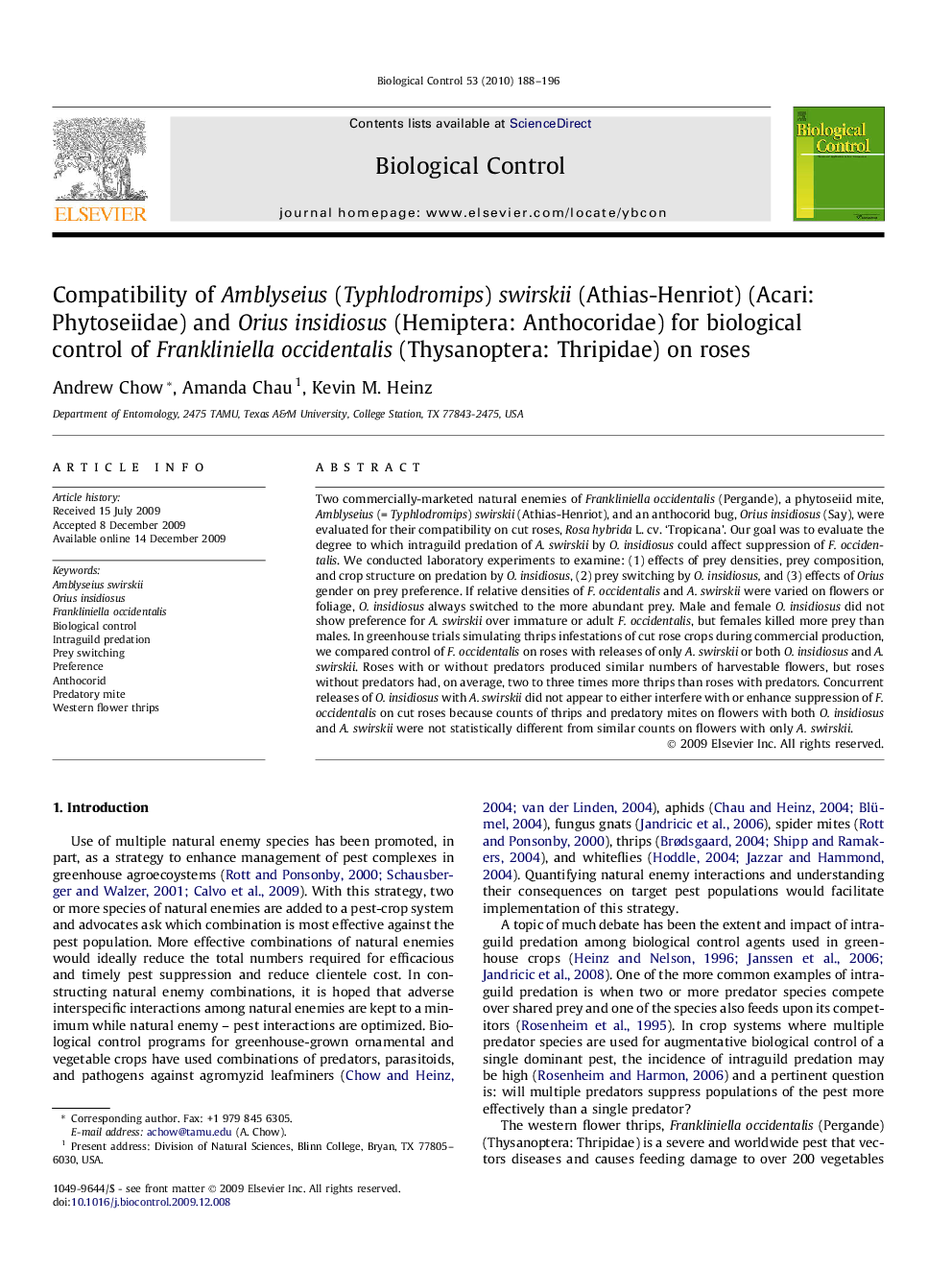| کد مقاله | کد نشریه | سال انتشار | مقاله انگلیسی | نسخه تمام متن |
|---|---|---|---|---|
| 4504477 | 1321095 | 2010 | 9 صفحه PDF | دانلود رایگان |

Two commercially-marketed natural enemies of Frankliniella occidentalis (Pergande), a phytoseiid mite, Amblyseius (= Typhlodromips) swirskii (Athias-Henriot), and an anthocorid bug, Orius insidiosus (Say), were evaluated for their compatibility on cut roses, Rosa hybrida L. cv. ‘Tropicana’. Our goal was to evaluate the degree to which intraguild predation of A. swirskii by O. insidiosus could affect suppression of F. occidentalis. We conducted laboratory experiments to examine: (1) effects of prey densities, prey composition, and crop structure on predation by O. insidiosus, (2) prey switching by O. insidiosus, and (3) effects of Orius gender on prey preference. If relative densities of F. occidentalis and A. swirskii were varied on flowers or foliage, O. insidiosus always switched to the more abundant prey. Male and female O. insidiosus did not show preference for A. swirskii over immature or adult F. occidentalis, but females killed more prey than males. In greenhouse trials simulating thrips infestations of cut rose crops during commercial production, we compared control of F. occidentalis on roses with releases of only A. swirskii or both O. insidiosus and A. swirskii. Roses with or without predators produced similar numbers of harvestable flowers, but roses without predators had, on average, two to three times more thrips than roses with predators. Concurrent releases of O. insidiosus with A. swirskii did not appear to either interfere with or enhance suppression of F. occidentalis on cut roses because counts of thrips and predatory mites on flowers with both O. insidiosus and A. swirskii were not statistically different from similar counts on flowers with only A. swirskii.
Journal: Biological Control - Volume 53, Issue 2, May 2010, Pages 188–196